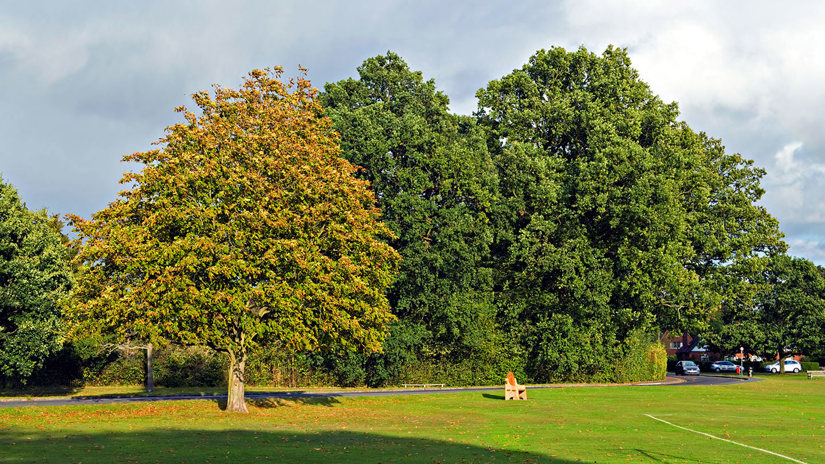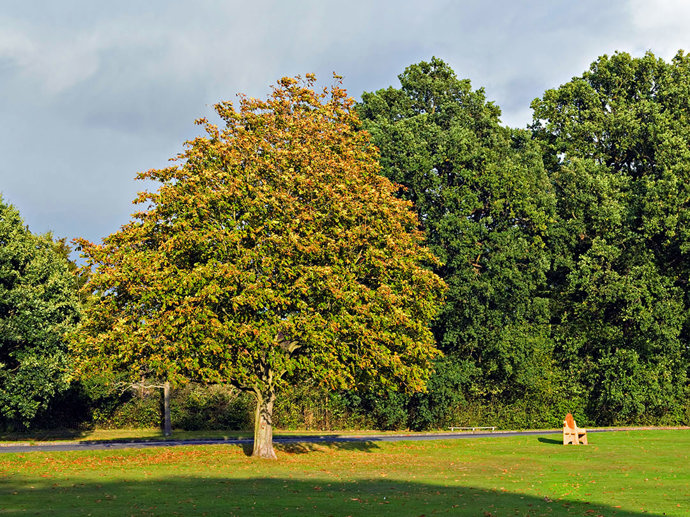Common name: eight-toothed spruce bark beetle
Scientific name: Ips typographus
What does it affect?: mainly spruce trees
Areas affected so far: Kent, England
Origin: mainland Europe
A serious forestry pest if left uncontrolled, the eight-toothed spruce bark beetle has the potential to cause significant damage to the UK’s forestry and timber industries.
Common name: eight-toothed spruce bark beetle
Scientific name: Ips typographus
What does it affect?: mainly spruce trees
Areas affected so far: Kent, England
Origin: mainland Europe
The eight-toothed spruce bark beetle is most frequently found on fallen trees as it prefers stressed and dying trees. If the population increases, the insect will move to living trees.
Symptoms include:
The eight-toothed spruce bark beetle is a very small beetle, around 5mm long, which is cylindrical in shape, shiny and hairy, and dark brown when mature.
It is predominantly a pest of spruce, therefore plantations with only one species planted are particularly vulnerable to attack. Dramatic increases in beetle populations can then spread to neighbouring trees, including pine.

Credit: Konrad Wothe / naturepl.com
In late spring to early summer when temperatures reach 11-16˚C, the male beetles start to fly in search of new host trees. When the male finds a suitable tree, it will bore a nuptial chamber into the wood and emit a pheromone to attract up to four females. The first mated female will bore a gallery lengthways towards the top of the tree to lay her eggs in, and all subsequent females will bore galleries down the tree with niches for each egg. They can produce between 30 and 80 eggs.
The damage happens when the egg hatches; the larvae widen and lengthen the egg niche and bore a pupal chamber where they will pupate under the bark surface. This seriously harms the channels that transport water and nutrients in the tree, causing dieback of the upper branches and in severe cases, the whole tree.
The beetle can also carry a pathogenic fungus which can discolour the timber and impact its commercial value.
The eight-toothed spruce bark beetle is found across mainland Europe and northern Asia.
It has been intercepted at UK ports in the past, but in 2018 it was found in a woodland in Kent. All host trees in the area were removed and incinerated to stop any spread. Eradication efforts were successful but it arrived again in 2021 and is found in multiple locations in Kent and East Sussex.
We don't know how the beetle reached Kent and East Sussex, but the main risk of introduction is on wooden materials and plants. The eight-toothed spruce bark beetle is able to fly over reasonably long distances and with additional wind and air movement; they have been recorded to travel up to 43 kilometres.
There is currently a demarcated zone in South East England to try and prevent the movement of the beetle into more regions. This movement of spruce materials includes bark from within the demarcated area.
While the main threat is on spruce trees, in very rare and specific circumstances, the eight-toothed spruce bark beetle can be found on Scots pine or Douglas fir.
To combat pests and diseases like the eight-toothed spruce bark beetle we:


We are fighting back against pests and diseases. Find out what we're doing to prevent the spread and protect the UK’s trees.
Other pests and diseases: